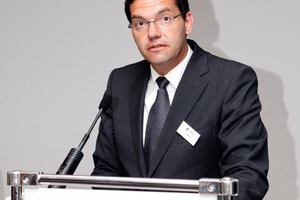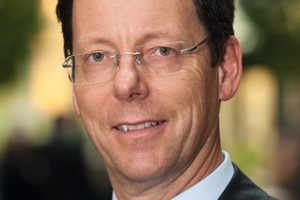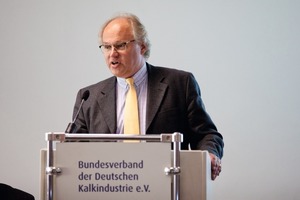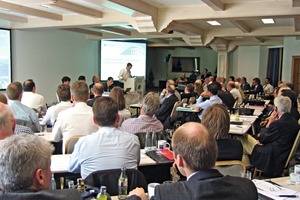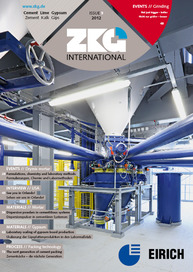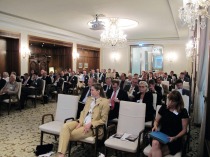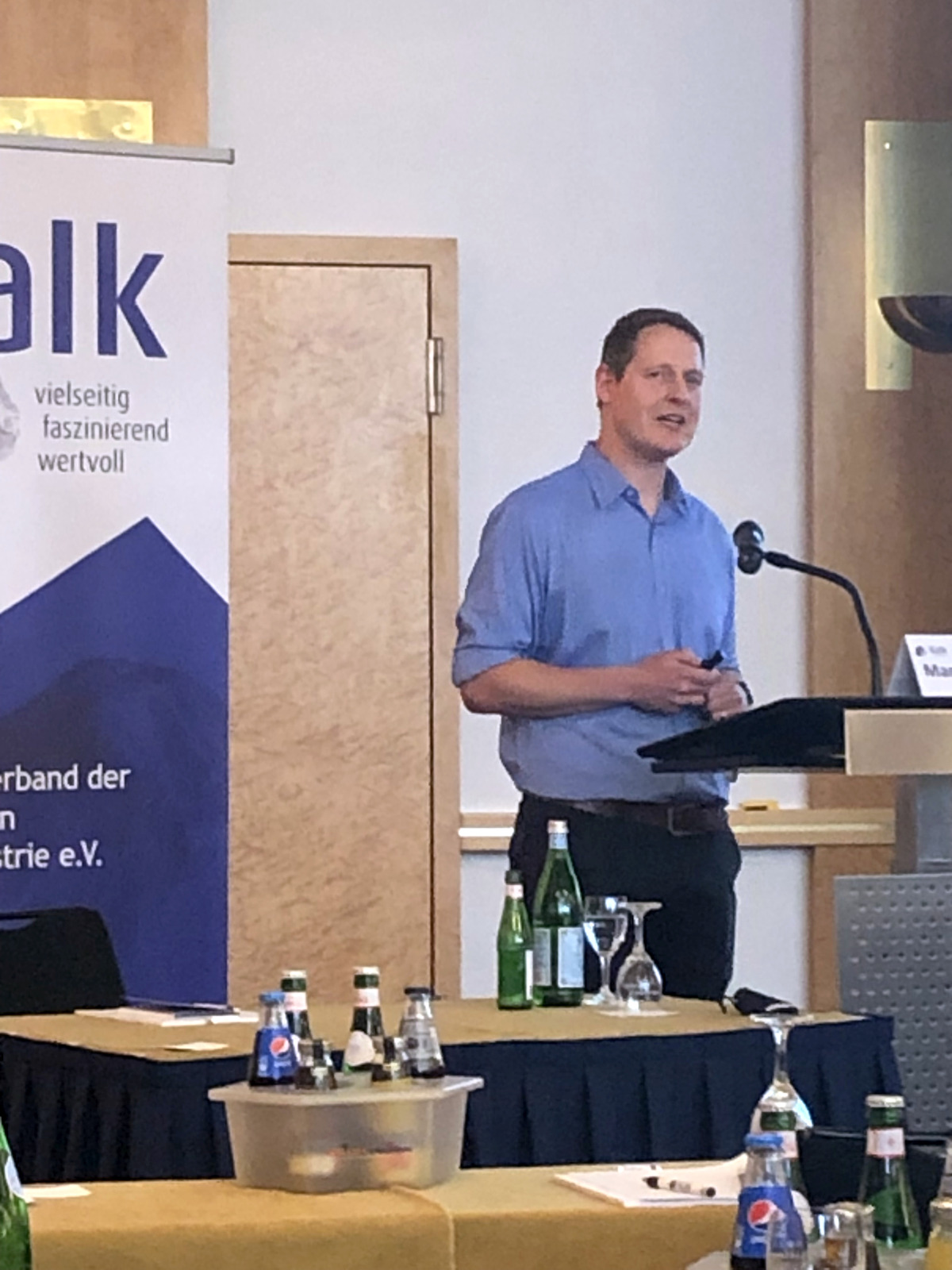Lime industry anticipates slight decline in sales
On the Friday, the numerous workgroup meetings held in the morning were followed, after the mid-day break, by the mandatory general meeting. The most prominent agenda item here was the election of a new chairman since the previous head of the association, Michael Liell, member of the Board of Management of Rheinkalk GmbH, Wülfrath (Fig. 1), after seven years of leading the BVK, had decided not to stand again. The new chairman, Dr. Thomas Stumpf, member of the Board of Management of Fels-Werke GmbH, Goslar (Fig. 2), was elected unanimously. The meeting again confirmed Moritz Iseke, managing shareholder of Kalkwerke H. Oetelshofen GmbH & Co. KG, Wuppertal, as deputy chairman. Both are pleased to be able to represent the German lime industry jointly with principal BVK director Martin Ogilvie for the next two years.
“We will be able to bear Europe’s burdens only with united industrial strength. We need the industrial value chains in Germany, and we cannot allow them to suffer further harm”, was Liell’s appeal to the politicians in Berlin and Brussels in his final address as BVK chairman. Nor, he noted, should the risks entailed in the energy turnaround be underestimated. A climate-friendly energy policy cannot, ultimately, be the only aim, energy supplies must also be assured and affordable, he continued: “Energy costs, at around 40 % of the total, are the decisive factor for the lime industry”.
The retiring chairman also examined the industry’s current figures in his annual report: As he noted, market sales of unburnt products were 18.4 million tonnes in 2011, an increase of more than 2 % compared to the previous year. Of the 18.4 million tonnes of unburnt lime products sold, approx. 40 % were supplied for building industry applications, and for highway and sidewalk construction, in particular. The market in burnt lime products was slightly more than 6.5 million tonnes in 2011, an increase of 2 %. The at first glance positive result was, Liell cautioned, practically entirely attributable to the improportionate recovery in lime deliveries to the building-materials industry. “The other purchaser segments remained static, or declined”, commented Liell.
The remaining figures: 3.1 million tonnes of lime were supplied for industrial applications. As in the previous year, sales to the iron and steel industry were 2.4 million tonnes. Deliveries for environmental-protection applications fell by 1.7 %, to around 1.3 million tonnes. Supplies of limes for prevention of air pollution fell disproportionately (-5 %). Sales to the building industry (-12.3 %) also declined; the drop in sales for highway and sidewalk construction (-16.8 %) should be mentioned here, in particular.
As Liell continued, sales followed a negative trend in the first quarter of 2012 compared to the same period of 2011. In the case of burnt products, the industry sold, at 1.52 million tonnes, 3.7 % less than in the preceding year. Higher sales in the fields of building materials and environmental protection were not enough to balance out the deficit in the important steel and chemicals sectors, concluded the departing BVK chairman. “The German lime industry assumes, not least of all, that the fall in the motor-vehicle market and in investments in plant and equipment, that it will not be possible to achieve the result from 2011 in the year 2012”.
In closing, Liell also focused on the effects of emissions trading. He stated that it is necessary to assume that a good 20 % of certificates would have to be purchased, spread across all German lime industry plants at the end of the third trading period. This, he noted, would mean a further burden for the lime industry on top of rising energy prices. Liell was also unable to predict that CO2 certificate prices would remain at their present level. In addition, the industry’s productivity improvements and the energy-efficiency potentials of its kilns are now practically exhausted. It would therefore no longer be possible to absorb extra costs by means of further production-cost economies.
Martin Ogilvie, principal director of the BVK (Fig. 3), then submitted the Annual Report for 2011/2012 and reviewed the most important topics. It was apparent that the lime industry’s products are indispensable for Germany as an industrial location, since limestone and lime are the basic requisites needed at the start of numerous industrial value chains. Of the association’s current core activities, Ogilvie mentioned lobbying in Berlin and Brussels on the subjects of the energy turnaround, climate policy and emissions trading, along with the upcoming revision of energy and climate tax concessions for industry as the essential elements.
Prof. Dr. Wolfgang Hüther, director of the Cologne Institute for Economic Research, then read a celebratory address on the subject of: “German Industry: What will be the basis of its success in the future?” (Fig. 4).
The next general meeting of the BVK is expected to take place in June 2013 in Warnemünde (Baltic Sea).

